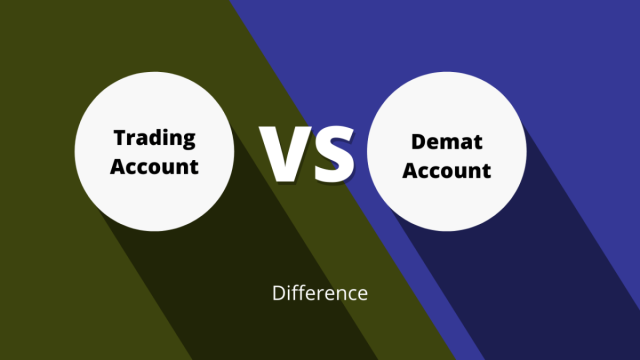Introduction
Contents [show]
Hello, financial fans! If you’ve ever tried stock trading, you’ve probably heard terms like “Demat account” and “trading account.” While they might seem alike, these accounts have different uses. Knowing the differences between a Demat and a intraday trading account is important for anyone wanting to invest in the stock market. So, let’s look into the details and clear up any confusion you might have.
Differences in Demat & Trading Account:
| Feature | Demat Account | Trading Account |
| Purpose | Holding securities in electronic form | Buying and selling securities |
| Functionality | Stores shares, bonds, mutual funds, etc. | Facilitates transactions in the stock market |
| Linkage | Linked to trading account | Linked to bank and Demat accounts |
| Maintenance Charges | Annual maintenance fees | Transaction-based charges |
| Requirement | Needed for holding electronic securities | Needed for executing market transactions |
| Usage | Long-term holding of securities | Frequent trading of securities |
| Opening Process | KYC, proof of identity, address, and PAN card | Similar to Demat but requires bank account link |
| Regulation | NSDL, CDSL | NSE, BSE |
How to Open a Demat Account
Opening a Demat account is a straightforward process. Here’s a step-by-step guide to help you easily open Demat account.
- Choose a Depository Participant (DP): A DP is an agent of the depository (NSDL or CDSL) through whom you can open your Demat account. Many banks and financial institutions offer this service.
- Fill Out the Application Form: Visit the DP’s website or their office to fill out the Demat account opening form. This form requires basic information such as your name, address, and contact details.
- Submit KYC Documents: You’ll need to provide copies of your PAN card, proof of identity (like Aadhaar card, passport, or voter ID), and proof of address (like utility bills or bank statements).
- Sign the Agreement: Sign an agreement with the DP, which outlines your and the DP’s rights and duties.
- In-Person Verification (IPV): Some DPs require an in-person verification process where you might need to visit their office or have an agent visit you.
- Receive Your Demat Account Number: Once your documents are verified and processed, you’ll receive a unique Demat account number (also known as Beneficiary Owner ID).
How to Open a Trading Account
Now that you have your Demat account ready, let’s move on to opening a trading account:
- Select a Broker: Choose a stockbroker who offers trading services. This could be a traditional broker or an online discount broker, depending on your trading needs and budget.
- Fill Out the Trading Account Form: Visit the broker’s website or office to complete the trading account opening form. This form will ask for personal details, financial status, and trading preferences.
- Submit KYC Documents: Similar to a Demat account, you’ll need to provide KYC documents like your PAN card, proof of identity, and proof of address.
- Link Your Bank Account: Your trading account needs to be linked to your bank account for seamless fund transfers. Provide your bank details and a canceled cheque for verification.
- Complete In-Person Verification (IPV): Some brokers may require an IPV process similar to the Demat account opening.
- Sign the Agreement: Sign an agreement with the broker detailing the terms and conditions of using the trading account.
- Receive Your Trading Account Details: Once everything is verified, you’ll receive your trading account number and login credentials for online trading platforms.
Conclusion
Understanding the differences between a Demat and a trading account is fundamental for anyone venturing into the stock market. While the Demat account is essential for holding your securities in electronic form, the trading account is your gateway to executing buy and sell transactions. Both accounts work hand-in-hand to facilitate your trading journey.
By following the steps outlined above, you can easily open both Demat and trading accounts and start your investment journey. Whether you are a long-term investor or a day trader, having both accounts is essential for a smooth and efficient trading experience.
Happy investing!


